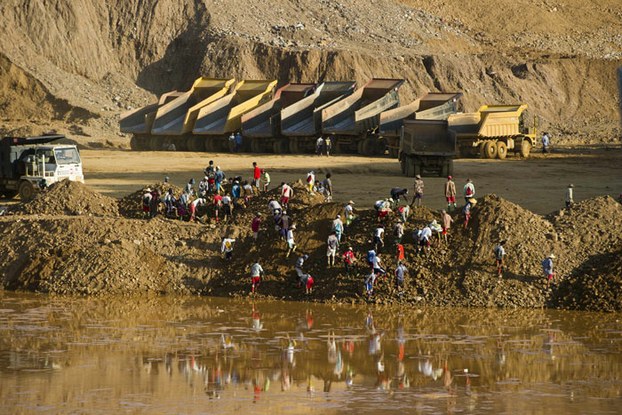




A new jade mine disaster in northern Myanmar has claimed the lives of at least 13 people who are thought to have been scavenging for the valuable mineral in the unstable waste cast off from mining operations, according to local officials and news reports.
The accident occurred late Thursday in Hpakant township in Kachin State, where Myanmar's lucrative jade mining industry is located.
The deaths of freelance prospectors searching through the unstable mountains of mine tailings have become an almost regular occurrence in the region. It has captured the attention of the government, but officials have yet to do anything about the dangerous activity.
Jade is mined with heavy equipment that leaves behind small pieces in the waste soil that is piled into huge mounds. People who settle near the mounds to scavenge pieces from the towering piles are at risk when landslides occur.
Sai Nyunt Lwin of the Hpakant township hospital told the Associated Press that 13 bodies had been brought there from Seng Tawng jade mining village.
Mostly young people
All the dead were in their 20s and came from the towns of Myitkyina, Mohnyin and Putao, sources told RFA’s Myanmar Service. It was raining at the time of the disaster, making the tailings even more unstable.
As much as 90 percent of the world’s jade is mined in Hpakant and much of it ends up in China where it is considered a symbol of virtue and power and is believed to improve health and ward off evil spirits.
About 100 people were killed in a similar landslide in November last year, and 40 people were killed in a similar accident in January.
On April 19 through May 3, Ohn Win, head of the Ministry of Natural Resources and Environment, finished a tour of jade and gold mines in mineral-rich Kachin.
State Counselor Aung San Suu Kyi, whose National League for Democracy (NLD) party came to power at the beginning of April, has called for increased safety measures and government oversight of the industry.
NLD's challenge
Aung San Suu Kyi and the NLD have their work cut out for them. Not only is scavenging for jade a way that the poor can make some money, but the mining industry is intertwined with the government and the military.
Mining has taken off in Myanmar since the country’s former military regime handed power to President Thein Sein’s quasi-civilian government in 2011, leading to the lifting of many western-imposed sanctions.
Despite growing political reform in Myanmar, the country’s jade industry is still tightly controlled by a network of former generals, drug lords, and crony businessmen who keep the sector’s vast profits exclusively for themselves, according to a 2015 study by London-based Global Witness
Major players in the estimated U.S. $31 billion trade include former junta chief Than Shwe and senior figures in Myanmar’s ruling and military-dominated Union Solidarity and Development Party, the report said.
Global Witness said that an openly and equitably managed jade mining industry could greatly benefit the ethnic Kachin people and help drive development across Myanmar, but instead, “the people of Kachin State are seeing their livelihoods disappear and their landscape shattered by the intensifying scramble for their most prized asset.”
Dozens of small-scale miners have been injured or killed picking through the dangerous waste dumps in Hpakant over the last year, and Global Witness said that those who oppose the jade mining industry in the area “face land grabs, intimidation and violence.”
Reported by RFA's Myanmar Service. Translated by Khet Mar. Written in English by Brooks Boliek.